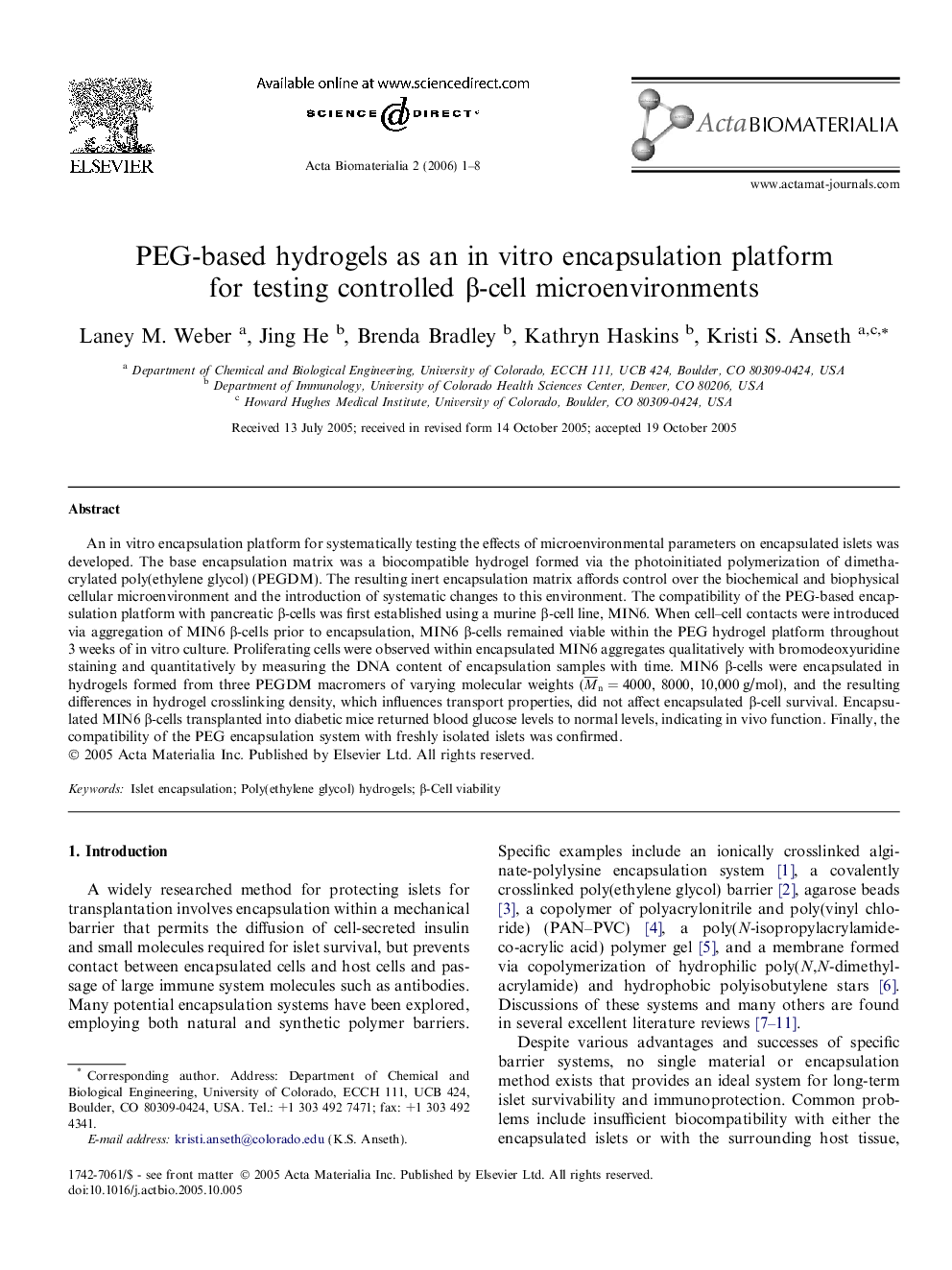| Article ID | Journal | Published Year | Pages | File Type |
|---|---|---|---|---|
| 2642 | Acta Biomaterialia | 2006 | 8 Pages |
An in vitro encapsulation platform for systematically testing the effects of microenvironmental parameters on encapsulated islets was developed. The base encapsulation matrix was a biocompatible hydrogel formed via the photoinitiated polymerization of dimethacrylated poly(ethylene glycol) (PEGDM). The resulting inert encapsulation matrix affords control over the biochemical and biophysical cellular microenvironment and the introduction of systematic changes to this environment. The compatibility of the PEG-based encapsulation platform with pancreatic β-cells was first established using a murine β-cell line, MIN6. When cell–cell contacts were introduced via aggregation of MIN6 β-cells prior to encapsulation, MIN6 β-cells remained viable within the PEG hydrogel platform throughout 3 weeks of in vitro culture. Proliferating cells were observed within encapsulated MIN6 aggregates qualitatively with bromodeoxyuridine staining and quantitatively by measuring the DNA content of encapsulation samples with time. MIN6 β-cells were encapsulated in hydrogels formed from three PEGDM macromers of varying molecular weights (M¯n=4000, 8000, 10,000 g/mol), and the resulting differences in hydrogel crosslinking density, which influences transport properties, did not affect encapsulated β-cell survival. Encapsulated MIN6 β-cells transplanted into diabetic mice returned blood glucose levels to normal levels, indicating in vivo function. Finally, the compatibility of the PEG encapsulation system with freshly isolated islets was confirmed.
